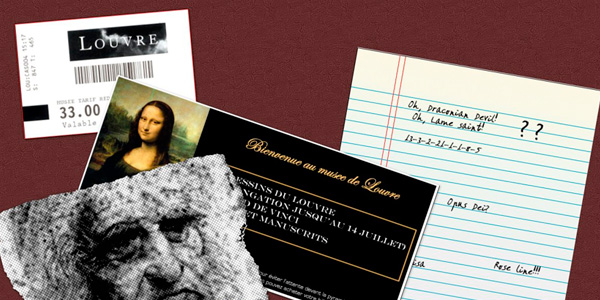With all the sensational reactions to Dan Brown’s novel The Da Vinci Code and the hype surrounding the upcoming movie, it‘s no surprise that the story has rocked the religious and secular world. It is time for RedHotPie to uncover one of the Church‘s greatest conspiracies for ourselves. Our search for truth takes us to the holy city of Rome where we consult with our real-life contact at the Vatican Library (FYI: She says all the Swiss Guards are hotties). We have been given access to the tombs with ancient writings from the deepest, darkest catacombs of the Vatican Library, and we will unearth the truth behind one of the most perplexing of holidays on the Christian Calendar. Read on to find out how this conspiracy stretches back thousands of years, involving ancient sex gods of Western European, African and Eastern religions and even celestial planetary movements.
Did you ever find yourself asking in Sunday school: what on Earth does a big bouncing bunny that leaves behind decorated chocolate eggs have to do with the resurrection of Jesus? And anyway, why the hell would a bunny lay eggs in the first place when it is a mammal – that, according to my year 5 biology classes, don’t traditionally lay eggs? Furthermore, why are we forced to endure supermarket marketing campaigns stuffing their aisles with Easter confectionery early in the New Year before they have even had a chance to take down the Christmas decorations? So what is Easter all about?
Ok lets go old school, or old-world, and look at the roots of this religious holiday. Easter was a long held fertility festival celebrated long before the time of Christ. Easter is named after the Anglo-Saxon pagan goddess of sexual fertility, Eostre. The Germanic people worshiped her as Ostara whilst she was known as Ishtar in the Middle East and Africa . Notice the similarities with Easter? Her Latin Name is Oestre which is where the hormone associated with female fertility, oestrogen, is derived from. The mythic hare, or Easter Bunny as it has become known as, is sacred to the goddess and stretching as far back as ancient Egypt , it remains one of the oldest symbols of fertility. Eggs are another obvious symbol of fertility and rebirth.
The date that the pagan ritual and the modern Christian holiday falls on is also important. The ancient people celebrated the festival of Eostre 14 days after the Equinox, which was also traditionally the time the Resurrection of Jesus was celebrated. The ancient festival was also a celebration of the changing of seasons, which may also give additional significance to the segments on hot cross buns as they can be seen to represent the four different seasons. So how did these two separate religious occasions become intertwined?
It is believed that around the second century AD, Christian missionaries, seeking to convert the pagan tribes of Europe , realized that the Crucifixion of Christ coincided with pagan fertility celebrations. These missionaries sought to graft the story of Jesus’ resurrection to the traditional beliefs of Pagan Europe in order to make Christianity more acceptable. This also had the effect of seeing many Pagan beliefs absorbed into the Cannon of Christian beliefs. Hence the confusing story of Easter.
In consideration of all the above-mentioned historical developments, we should come away with the knowledge that Easter is not in its essence, as is usually portrayed, a solemn and sober occasion but can also be seen as a time for rebirth and a celebration of fertility and virility. When it comes to celebrating fertility, RedHotPie has you covered with a huge member base of virile young and active member! Why not share your Easter eggs around and enjoy this holiday with other RedHotPie members. Check out Date Finder now and see who is available to meet this long Easter weekend!



